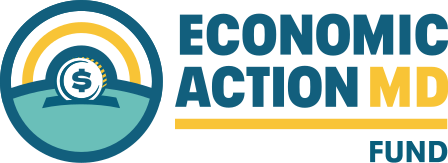News
Student Loan Collections Are Back
The Trump Administration has recently made a number of changes that affect new student loan borrowers as well as professionals who are still repaying undergraduate and graduate school loans. What do these changes mean for student borrowers and where can borrowers go for assistance? Like many things in the Trump Administration, some of these orders and agency changes may be halted or temporarily stayed by courts, but we wanted to share information with you that will help as you navigate this new environment for student loan borrowers.
Collection of Delinquent Loans
Student loan collections have been on pause since the start of the pandemic in March 2020. On May 5, the Department of Education announced it would resume forced collection of delinquent student loans. Delinquent student loans are loans that have not been paid in more than 90 days. In Maryland, 25% of individuals with student loans are at least 90 days late in payment.
The consequences of falling behind on student loan payments is severe. The Department of Education is reporting borrowers to credit reporting agencies resulting in people seeing their credit scores fall by up to 175 points. A lower credit score makes it very difficult to obtain credit, apply for a mortgage or other consumer loan, or even apply to rent an apartment.
The government will also collect on student loans by seizing tax refunds and social security payments, as well as garnishing wages. The federal government is required to provide borrowers with a 60 day notice if they are planning to seize benefits or garnish wages.
What Can You Do?
If you are behind on your student loan payments and facing seizure of benefits or garnishment, you can:
- Agree to seizure of benefits or garnishment – the garnishment of 15% of wages and seizure of benefits will end when your student loan debt is paid off;
- Consider options to cancel your student loan debt – You may be able to get your student loans cancelled under certain circumstances including:
- You have a disability that prevents you from working;
- Your school closed before you could complete your degree
- Your school was deceptive about graduation rates and outcomes, programs, federal aid or something else.
- Loan consolidation – take out a new loan that will pay off your defaulted loans. This is a good option for many and a way to quickly get your loan out of default. One drawback to this approach is that you’ll lose any credits you’ve earned through an income-driven repayment plan.
- Loan rehabilitation – you can enter a rehabilitation plan to repay your loan which requires nine months of on time payments on set amounts based on your income. Once you’ve made nine months of on time payments, your loan will be removed from default and placed back into repayment. However, this takes more time so you could experience garnishment or forced collections while you are making the on time payments.Consider options to get your loans out of default
Where to Turn for Assistance
- Student Loan Ombudsman – Economic Action Maryland Fund led work that established the student loan ombudsman position in 2018. Contact the ombudsman if you are experiencing difficulties with your student loan servicer at 410-230-6077
or 1-888-784-0136, or e-mail: studentloan.ombudsman@maryland.gov . Amy Hennen is the current student loan ombudsman. - Your Congressional Representative – Each member of Congress has caseworkers who assist constituents with their problems. If you are having problems with your student loans or your student loan servicer, reach out to the office of your member of Congress and ask to speak with constituent services or casework. You may have to sign a privacy waiver in order to discuss your case and have them make calls on your behalf.
Maryland Programs to Consider
- Maryland Loan Assistance Repayment Programs – Maryland offers several programs that assist borrowers in certain fields in repaying their loans.
- Maryland Student Loan Tax Credit – Maryland offers a tax credit to eligible borrowers who hold at least $20,000 in undergraduate and/or graduate student loan debt, and have at least $5,000 in outstanding student loan debt at the time of applying for the tax credit.
